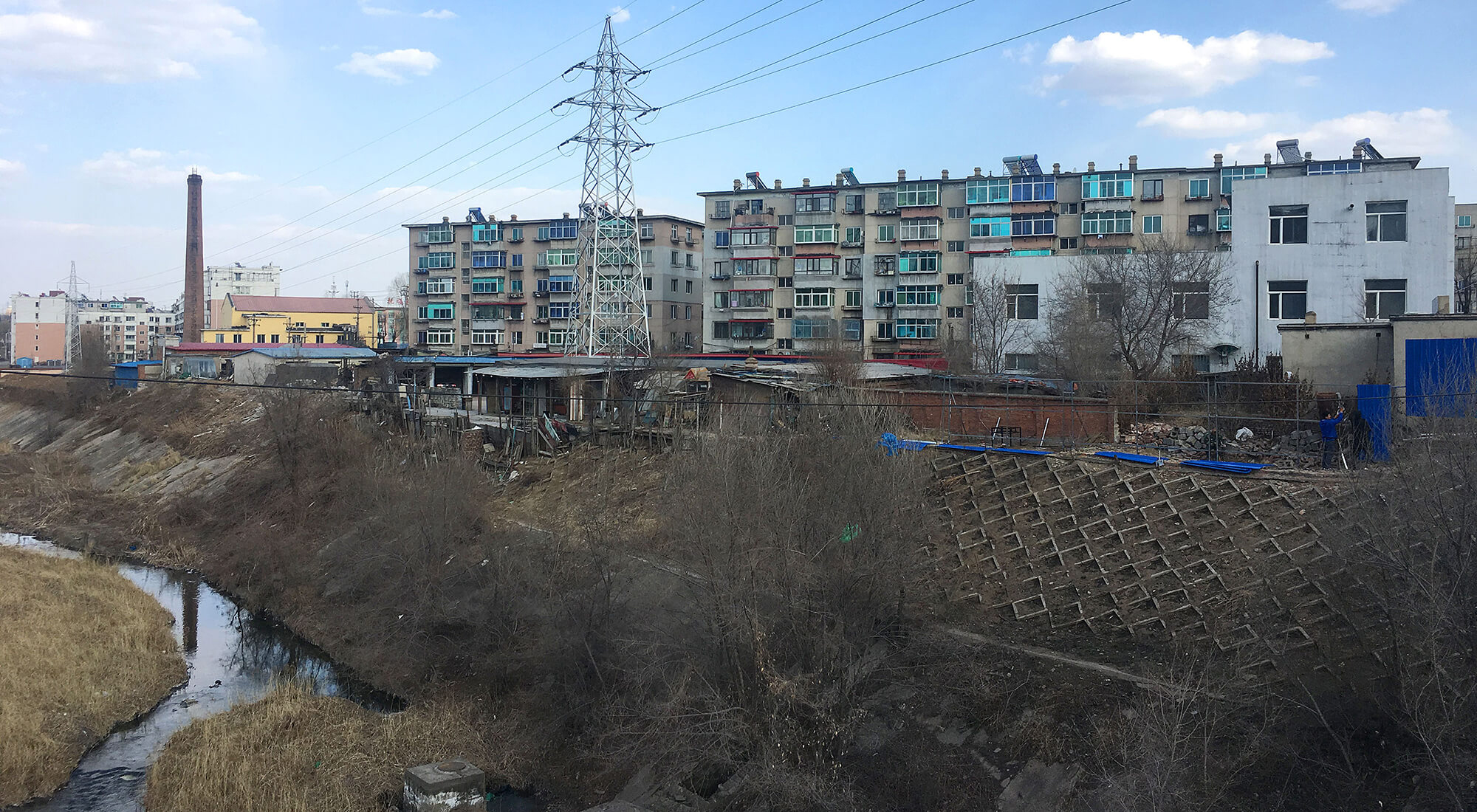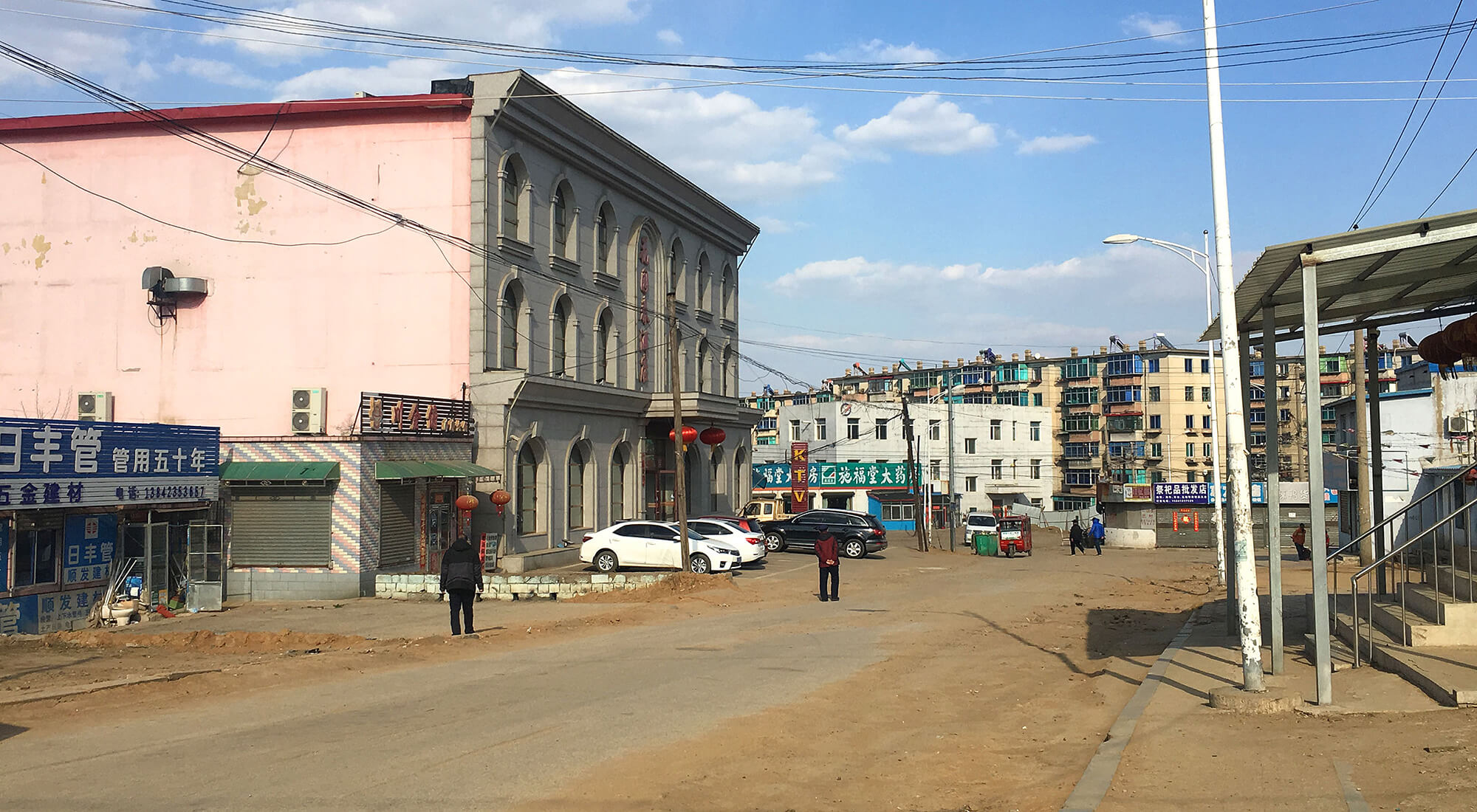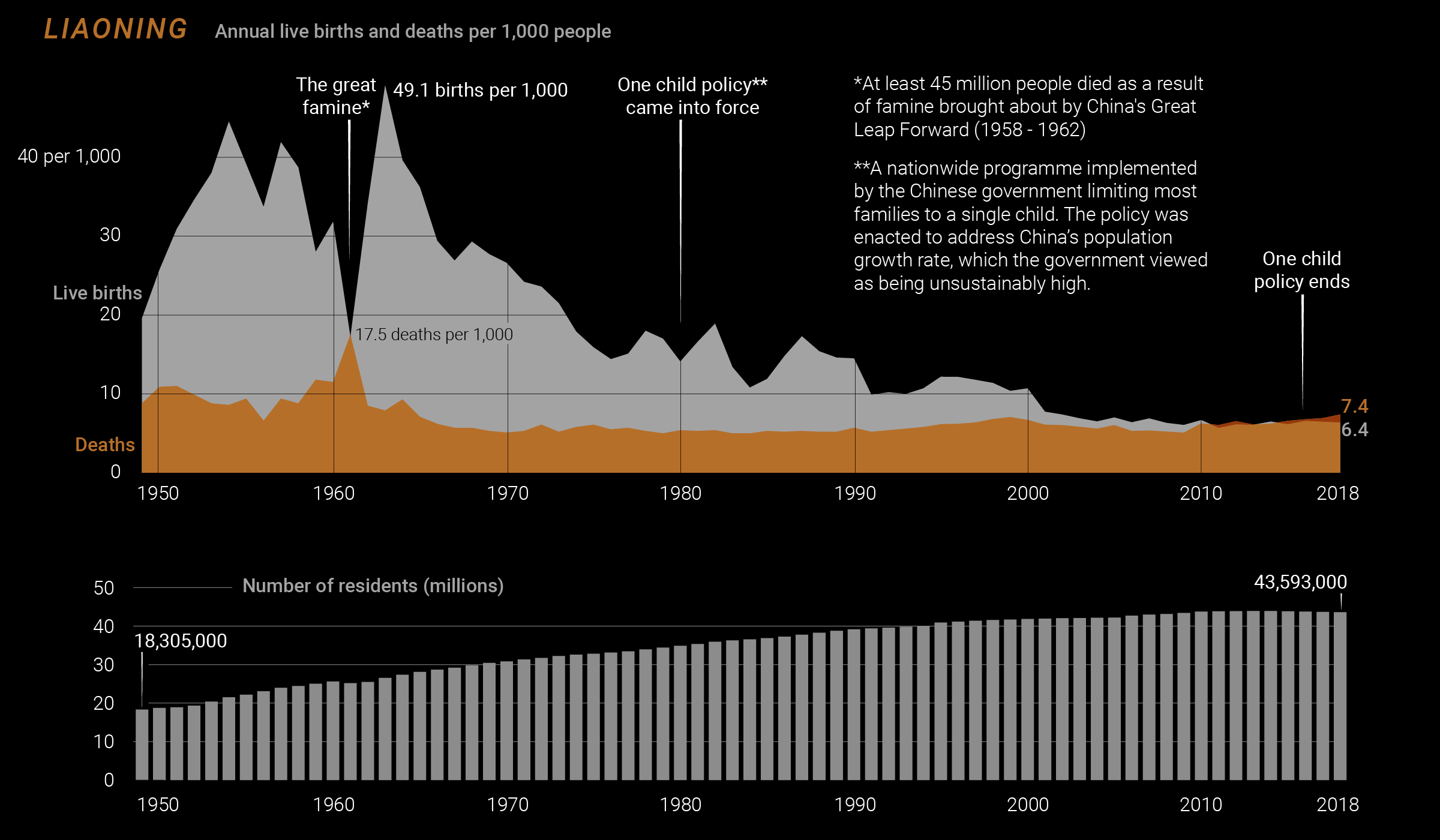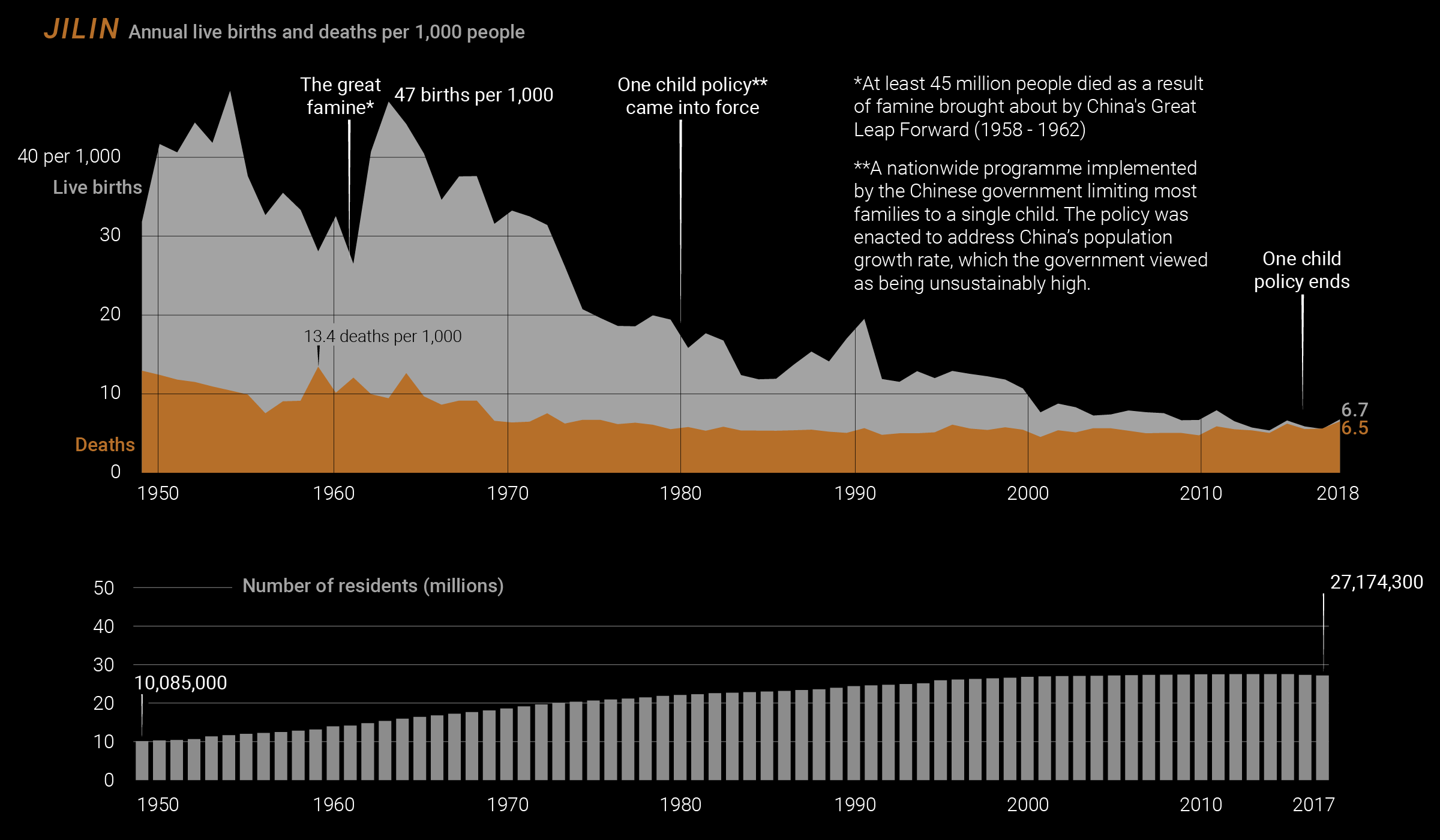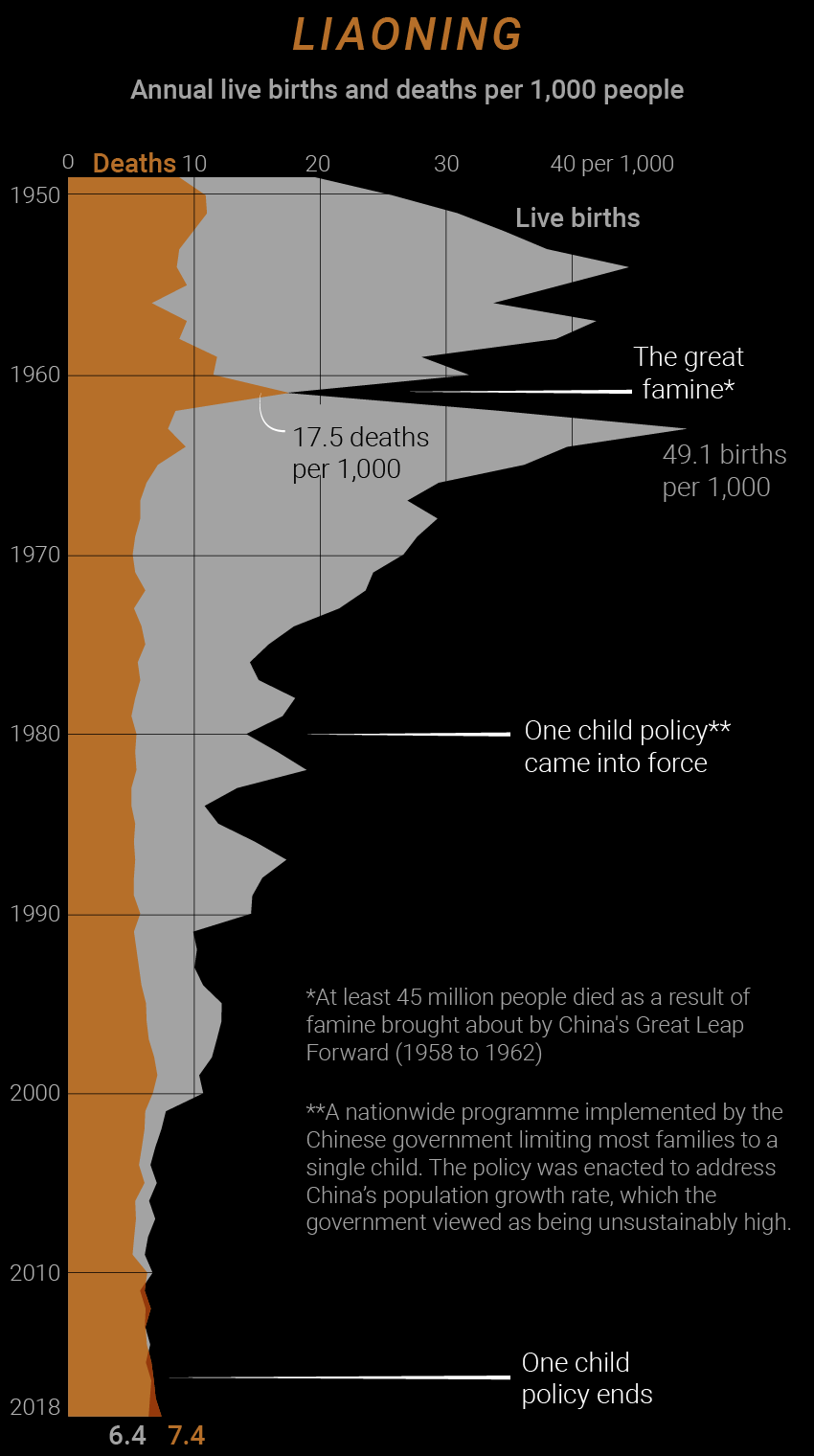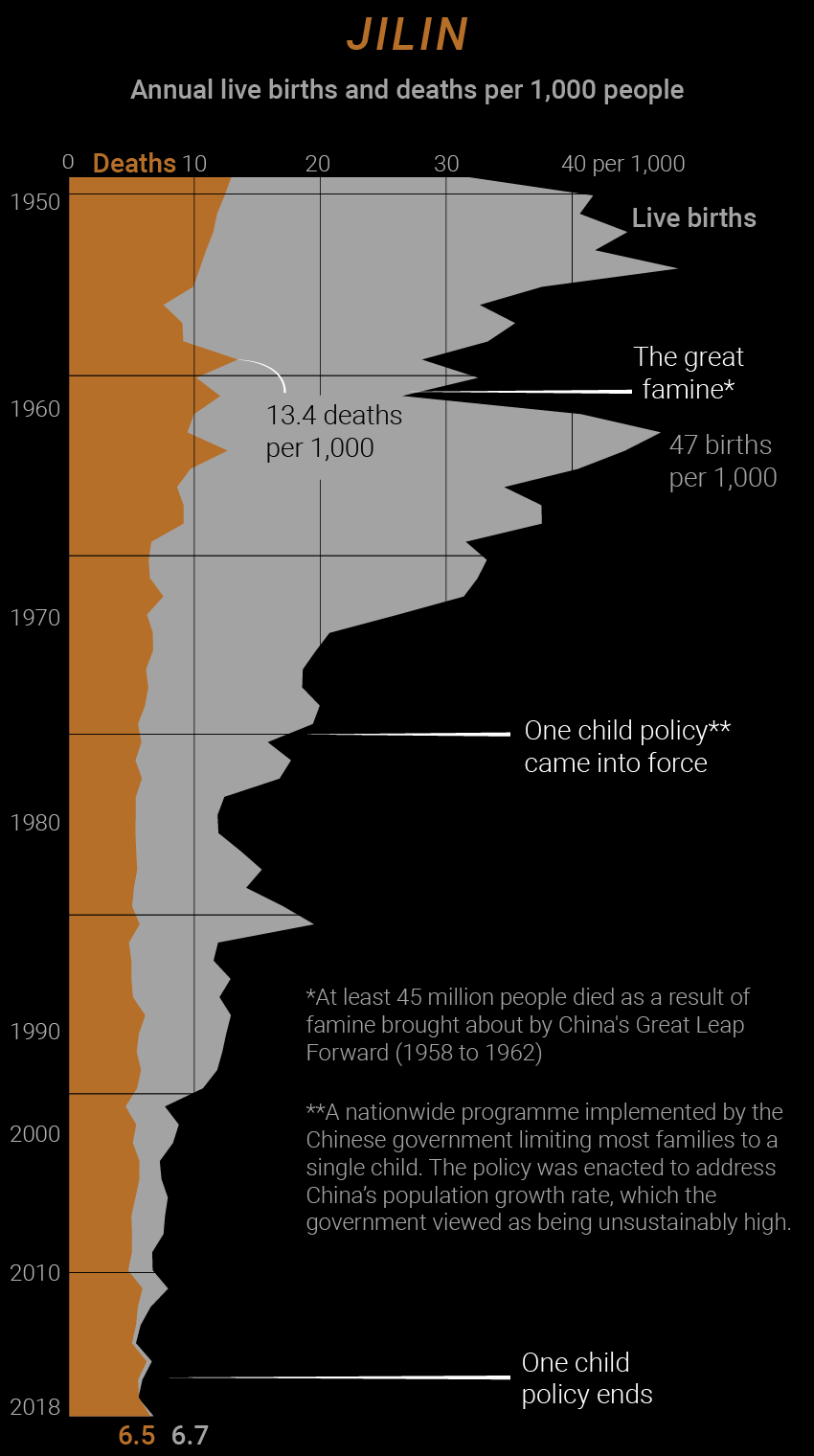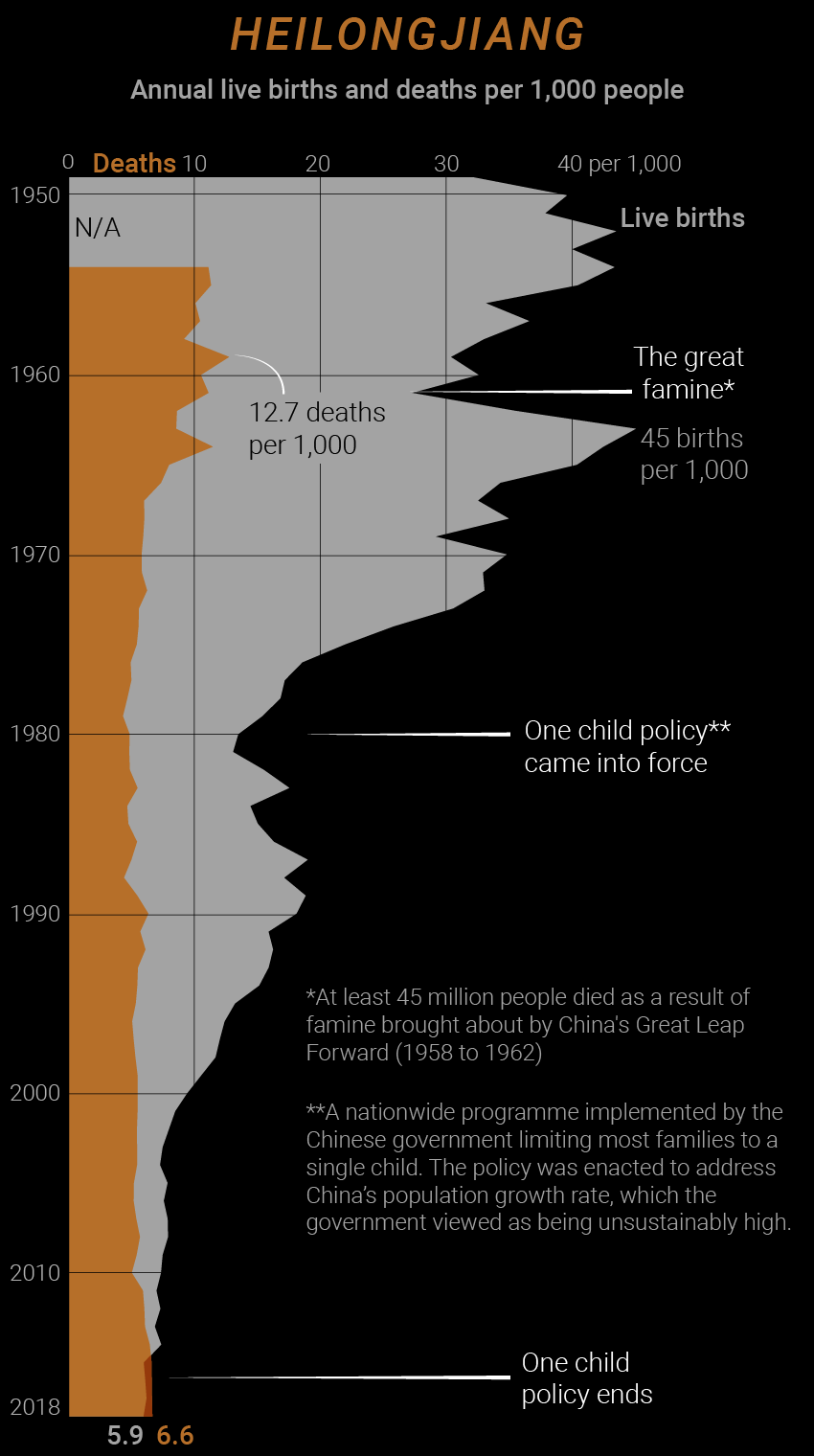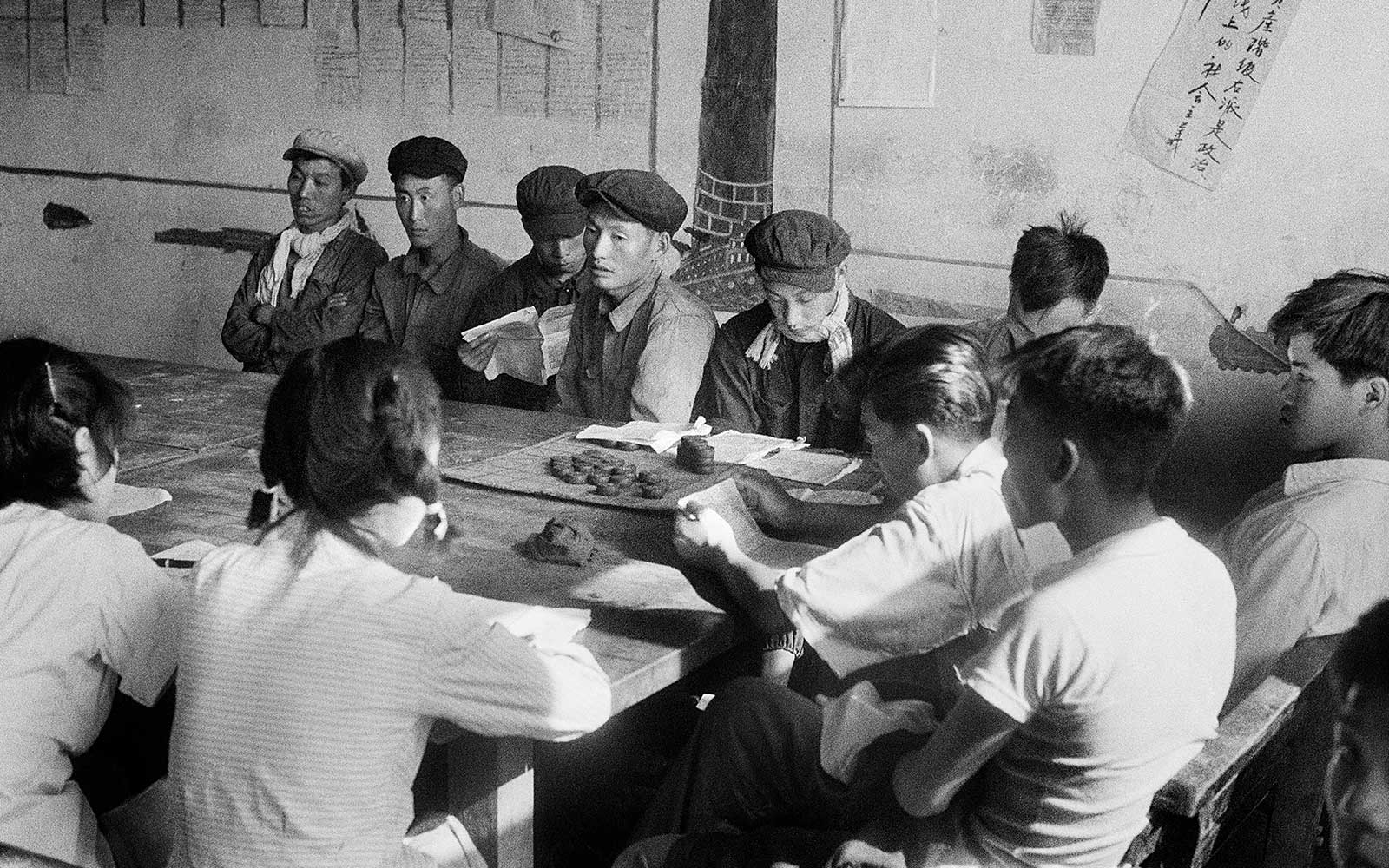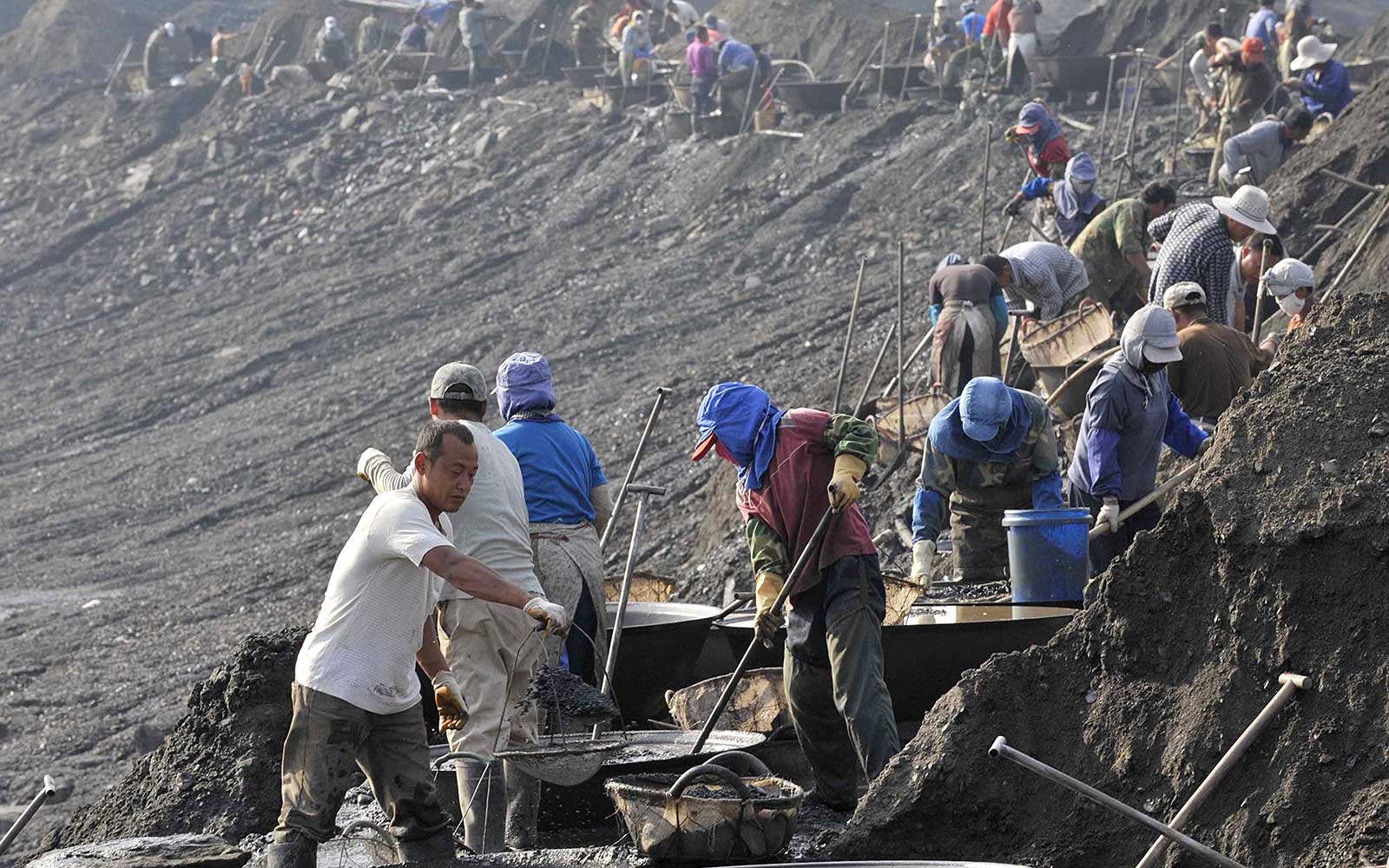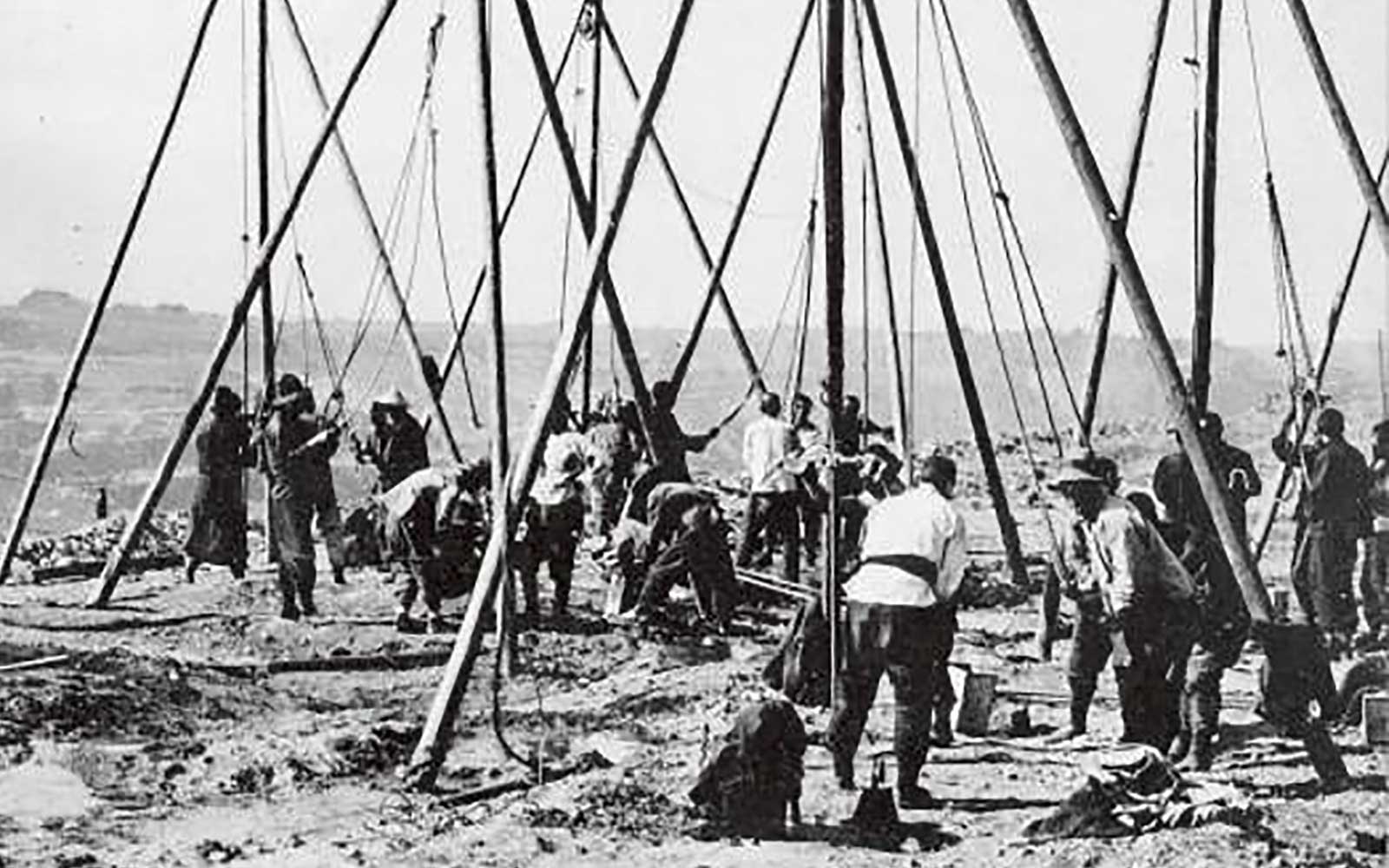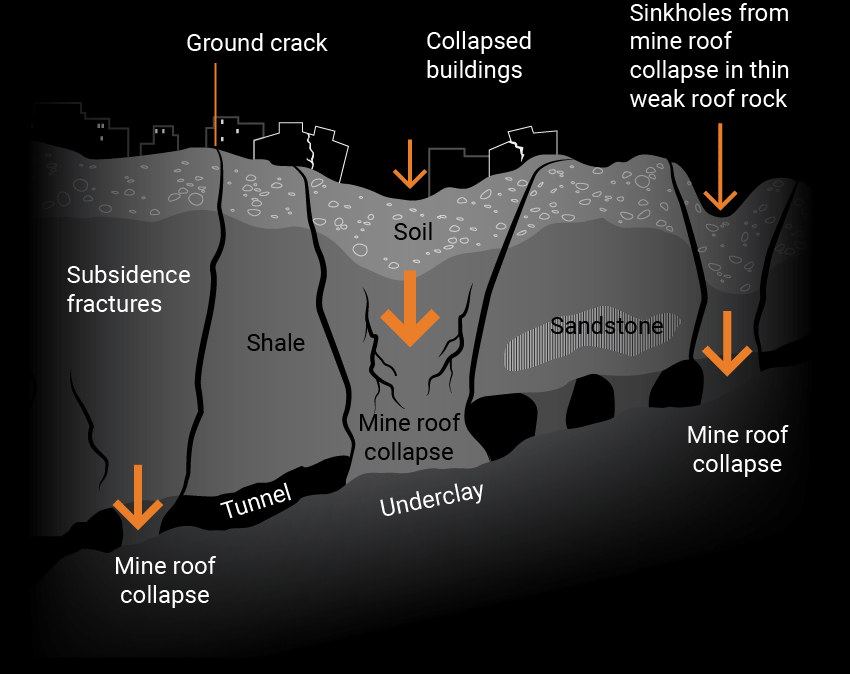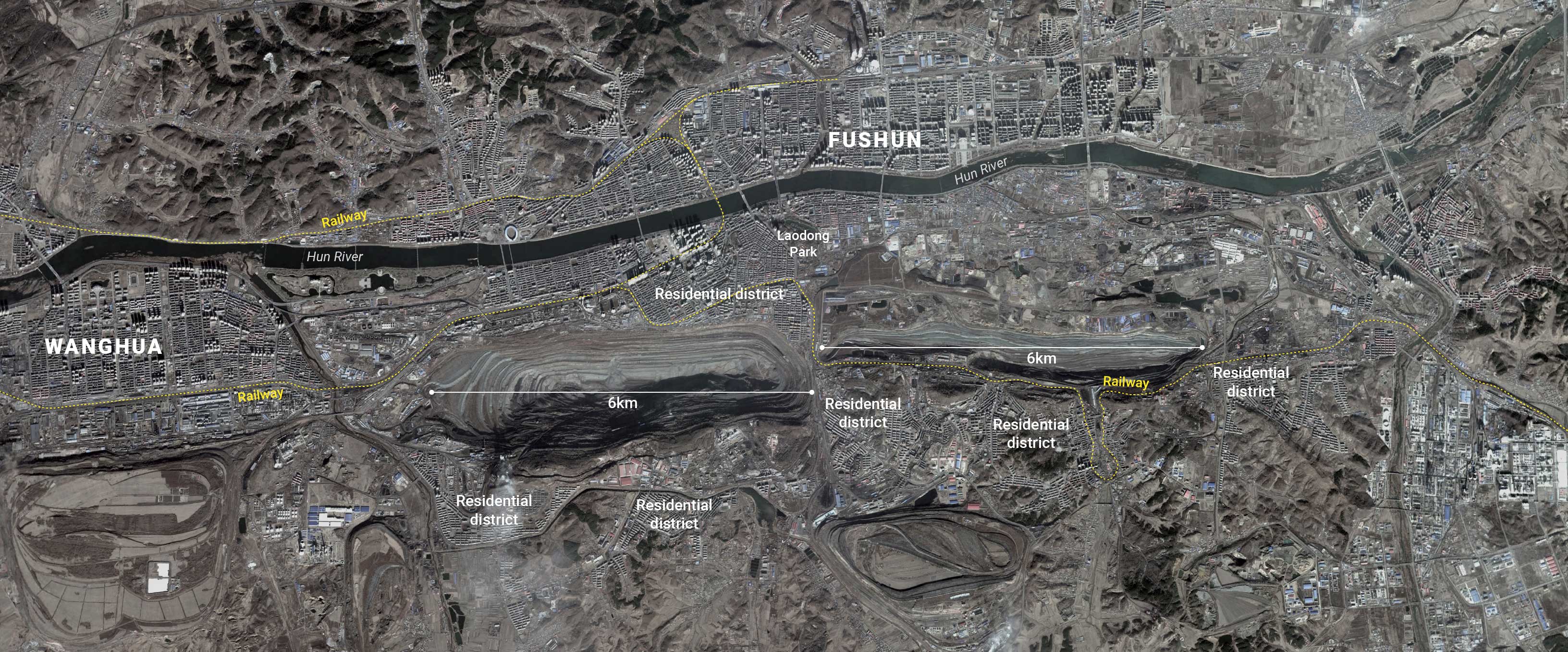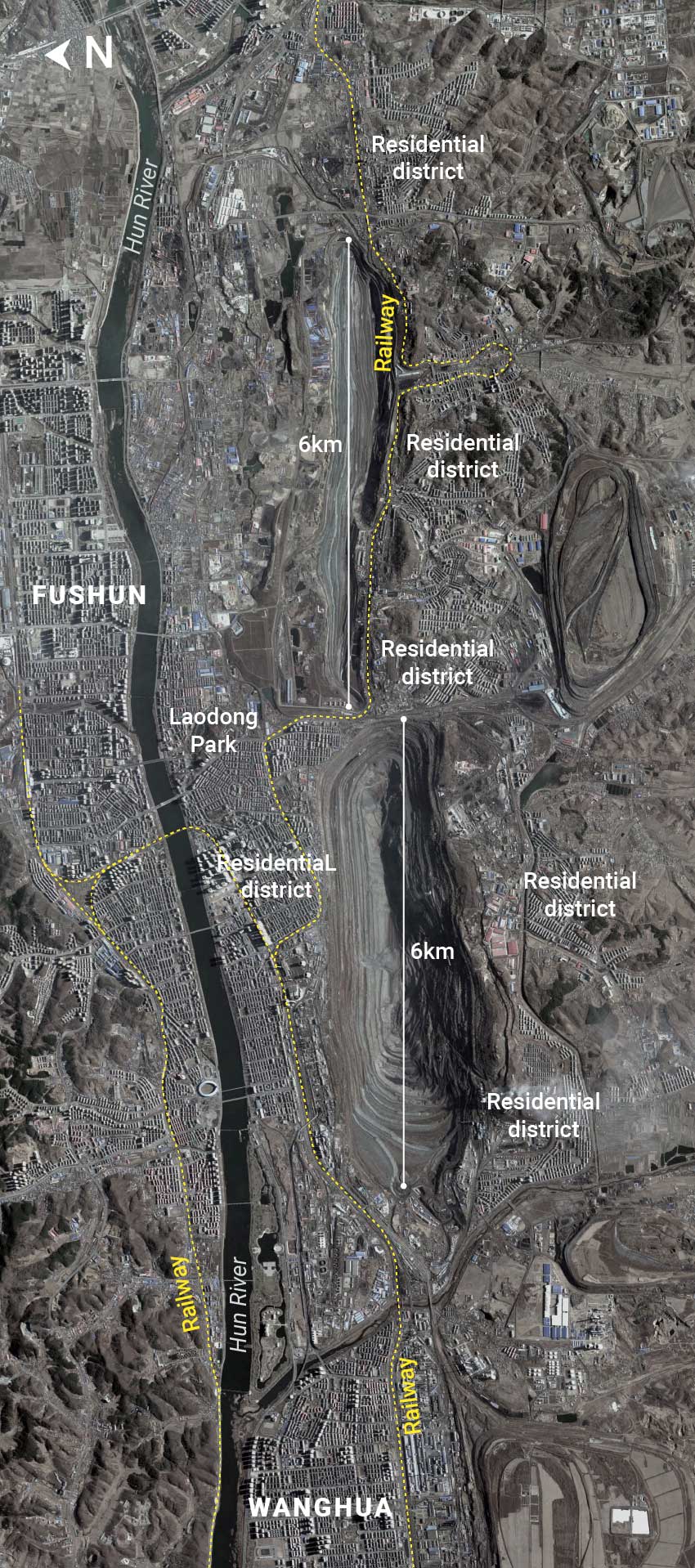Fushun’s fate is representative of many other cities in China’s northeast, which is made up of the three provinces of Liaoning, Jilin and Heilongjiang.
China’s rust belt regions
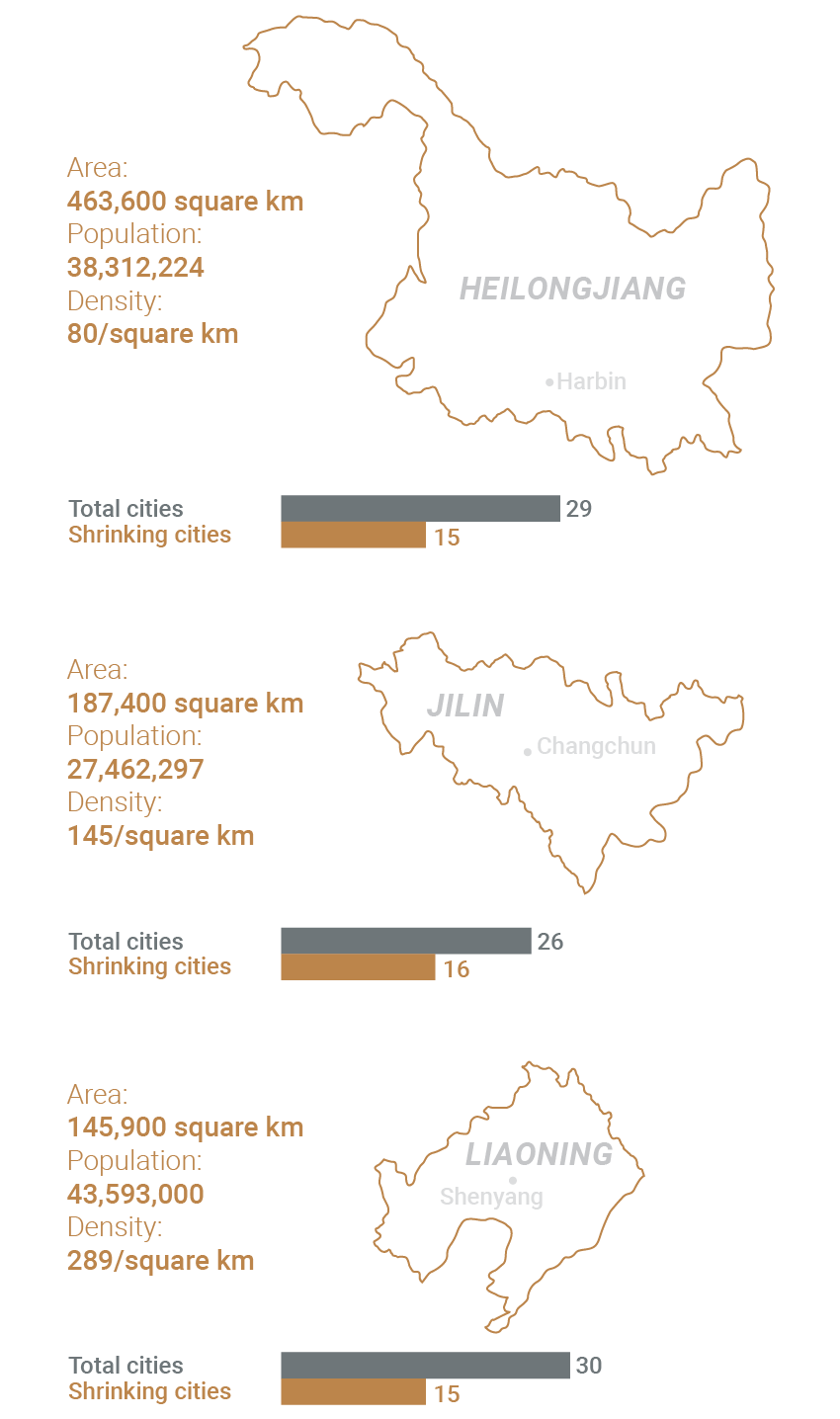
Boasting a rich concentration of natural resources, including coal, oil and iron ore, the region was the birthplace of China’s industrialisation, and drove growth in the early years of the People’s Republic. Now the region has earned the unenviable title of rust belt as its heavy industries fell into decline. In part this is due to a resistance to change engendered by a deep-rooted state planning mindset that dates back to the 40-year period of Japanese dominance after the end of the Russo-Japanese war in 1905.
More than half of the 85 cities in the three provinces have seen their populations shrink, and the outflow of people is being compounded by low birth rates and the ageing of the population that remains behind.
Cities whose populations shrank by more than 10 per cent between 2010 and 2017 Hover over a chinese city to see the change
Cities whose populations shrank by more than 10 per cent between 2010 and 2017
Birth and death rates in the three northeastern provinces (1950 - 2018)
In addition, long-standing bureaucratic inefficiency and corruption, coupled with political meddling, have hindered efforts to revitalise these cities. Meanwhile, these cities' reliance on a single or a few core industries — around the immediate needs of which they were built — has deprived them of the proper urban and economic development planning critical to ensuring sustainable growth.
Piles of coal at an opencast mine in Fuxin, Liaoning province.

With extractable coal exhausted and a lack of technology and capital to safely mine deeper underground, mines are shutting down.

Disused railway tracks near the abandoned Shengli mine.

Their focus on churning out raw materials and low value-added commodities for industries meant little attention was paid to producing competitive high-value added products.The consequences of this became more pronounced when the global commodities boom ended earlier this decade, pushing down prices and affecting the profits of the giant state companies that dominated the region.
What has been harder to measure has been the damage to the region’s environment. Decades of mining have caused pollution and degradation of the land. Little effort has been put into reversing the loss of biodiversity, erosion, the contamination of surface water, groundwater and soil and the problem of sinkholes in areas around abandoned mines.
A man walks across a frozen river in Benxi, Liaoning province.

An industrial site in the city of Benxi in Liaoning province.

Debris left behind near the abandoned Shengli mine.

But there are signs the authorities are taking note. Academics at the Unirule Institute of Economics, an independent Beijing-based non-profit think tank, have suggested that local governments in the northeast need to learn from China’s southern and coastal regions, redraw the administrative jurisdictions to help prune overcapacity and the overlapping of industries, and innovate to create new engines for economic growth.
Beijing is also pushing mixed public-private ownership reform to bring in private capital to revive the region’s declining state-owned companies (SOEs). Some 52 northeastern SOEs with total assets of 200 billion yuan (US$29 billion) and a combined total workforce of 80,000 have been placed in the scheme, including Benxi Steel Group, around which the iron ore-rich city of Benxi in Liaoning province was built.
Employment in the northeastern regions by industry
(million persons)

Meanwhile, in March last year the National Development and Reform Commission (NDRC) paired the northeastern provinces with three of their richer eastern and southern counterparts to boost cooperation and share resources.
Liaoning will work with Jiangsu province, Zhejiang province will partner with Jilin and Guangdong will provide support to Heilongjiang.
Companies are also pitching in. Fushun Mining Group is turning to deep excavation techniques to mine for oil shale, while simultaneously looking at the recycling sector to develop an industry value-chain business.
The West Open Mine in Fushun, Asia’s largest open pit mine, could be shut down by 2030.
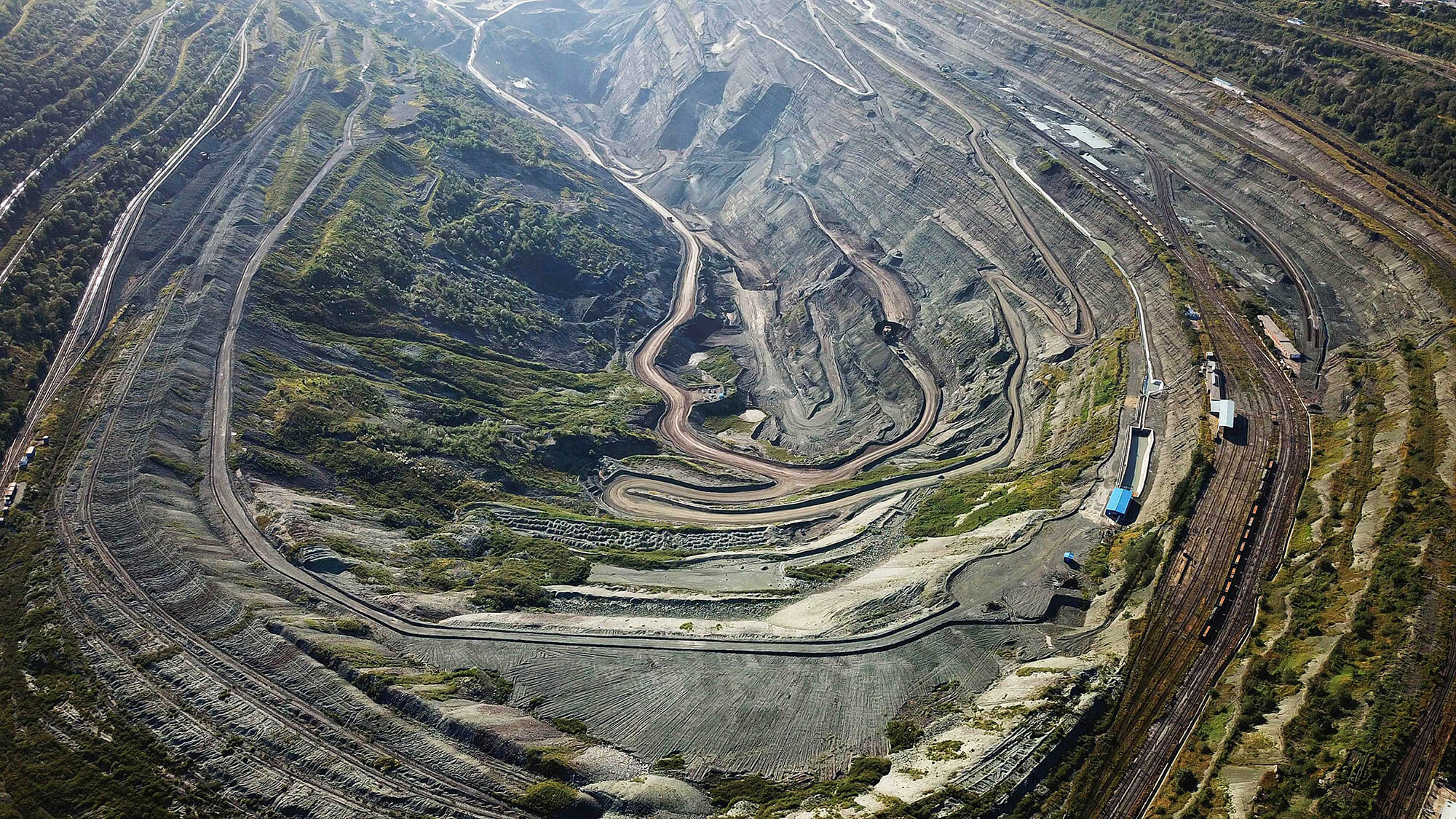
Whether such changes can reverse the fortunes of the neighbourhood around the Shengli mine, which was closed 20 years ago, remains to be seen.
Sinking Surfaces
Subsidence at coal mines is the downward movement of the ground surface due to gravity after the loss of support at the underground level. The surface of the land and everything that is built on it is supported by a structural system that includes the layers of rock in the ground between the surface and the level of the mine.

